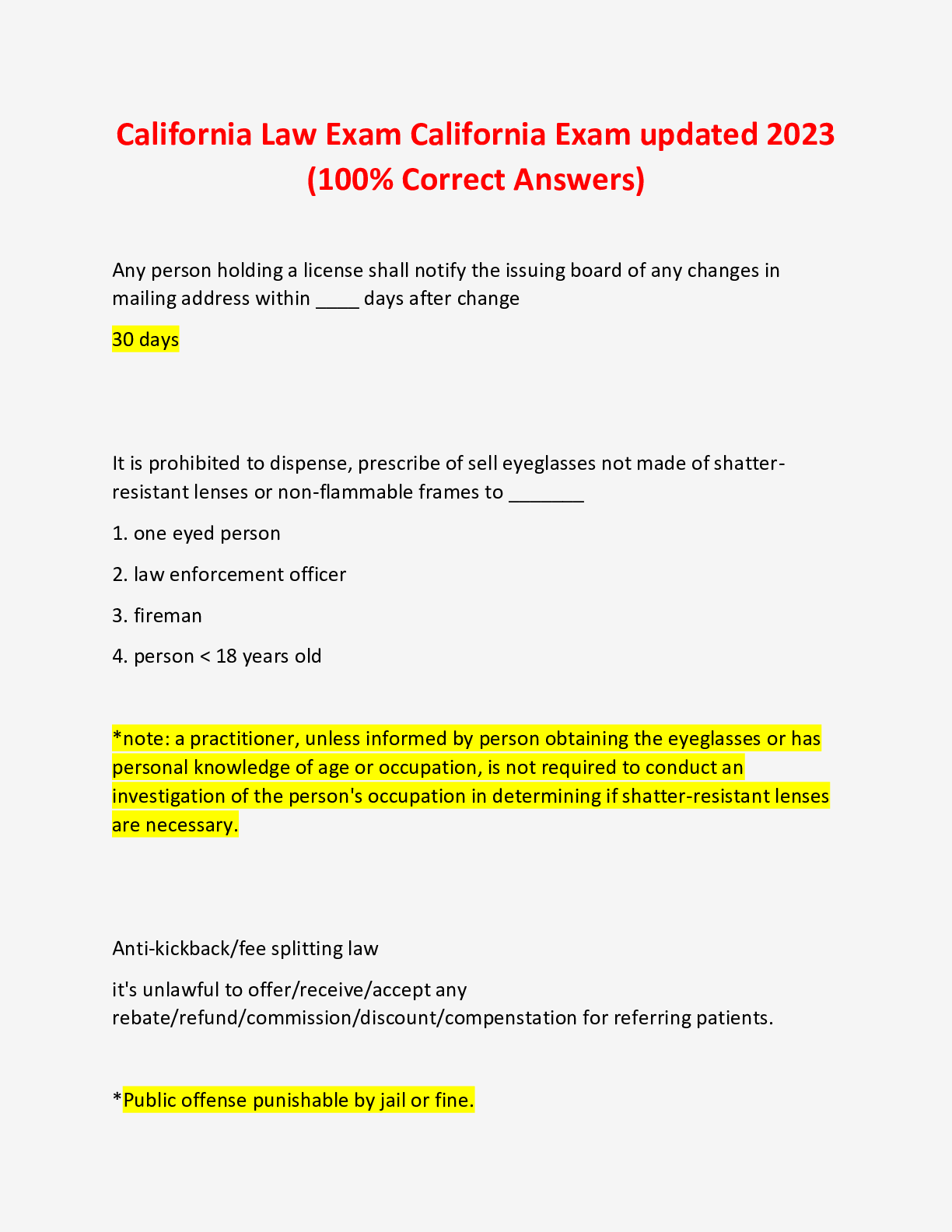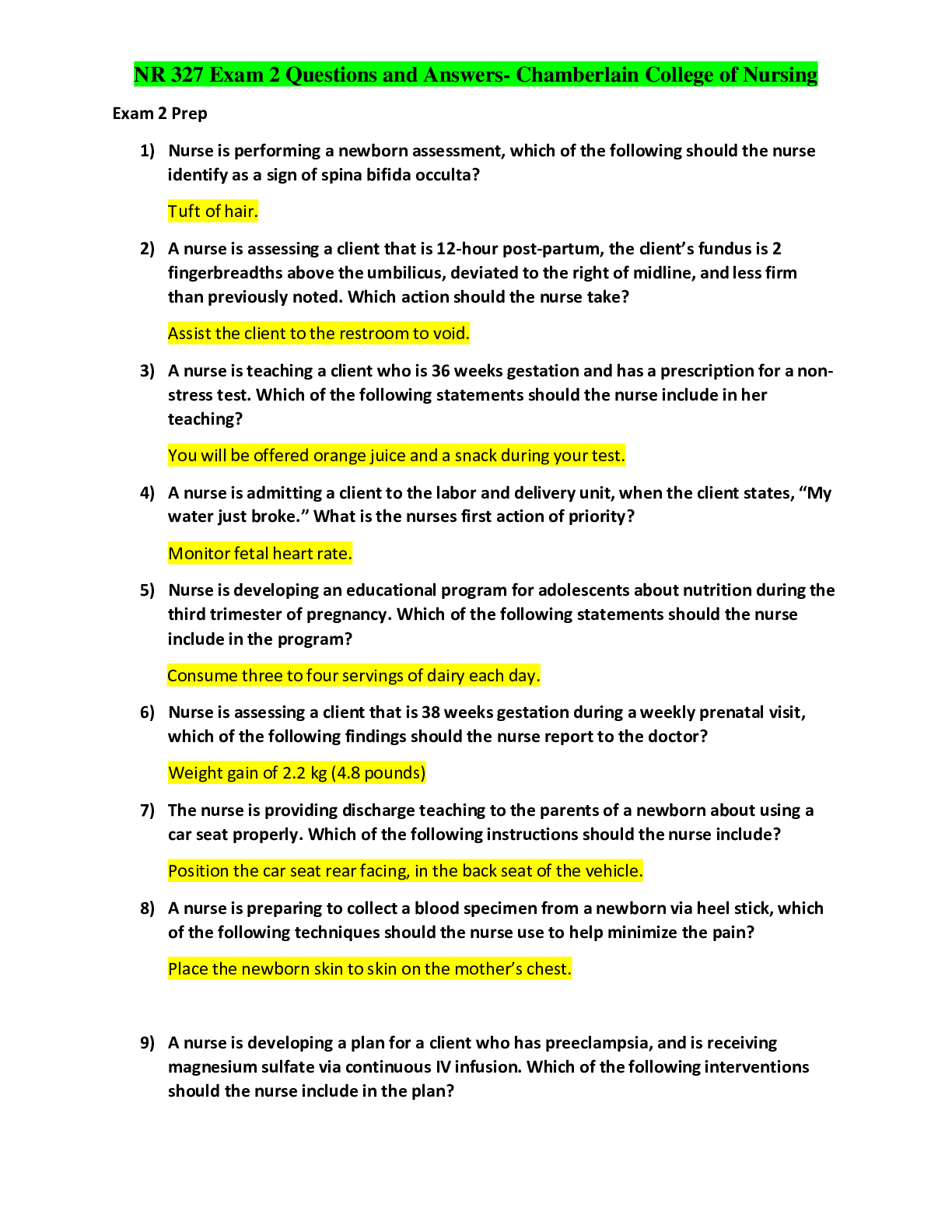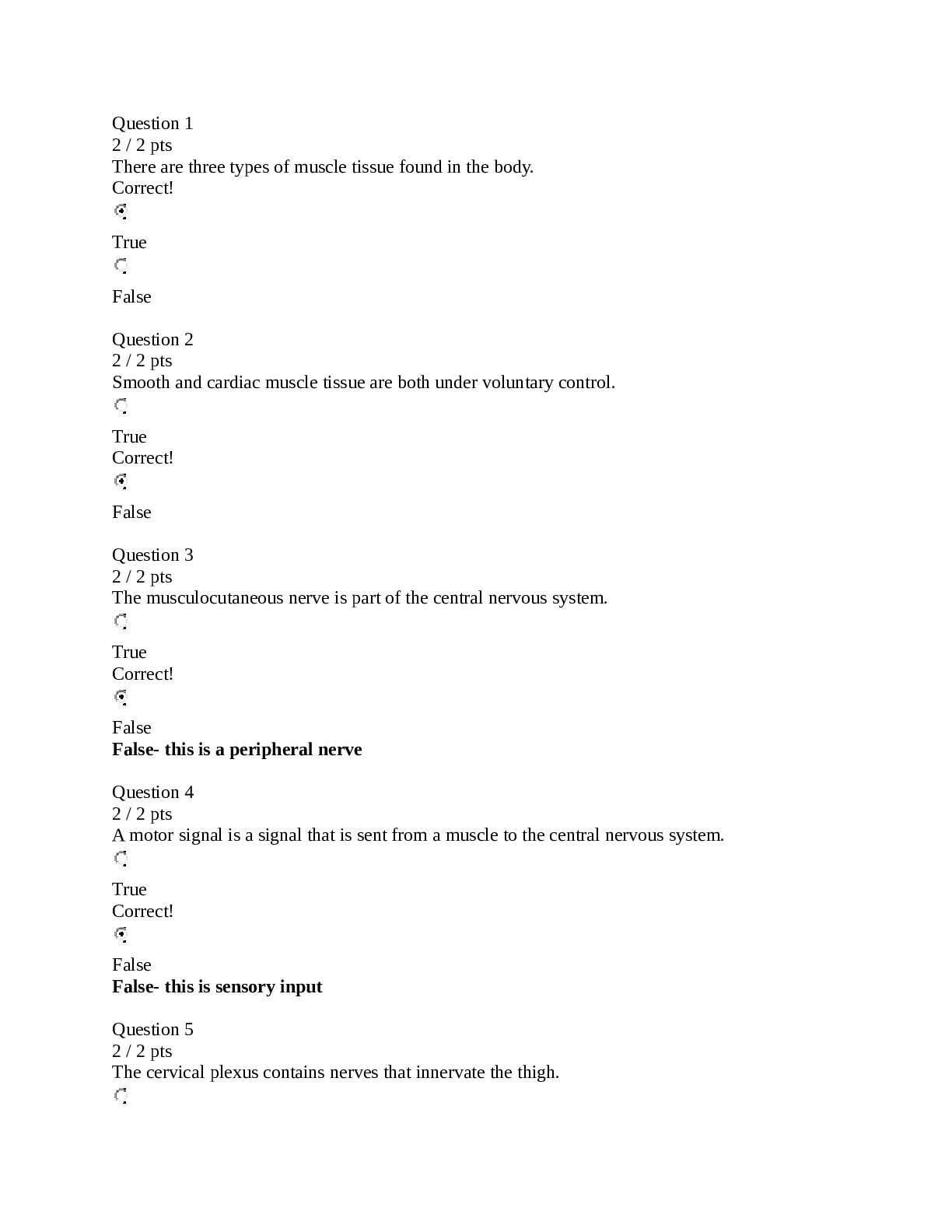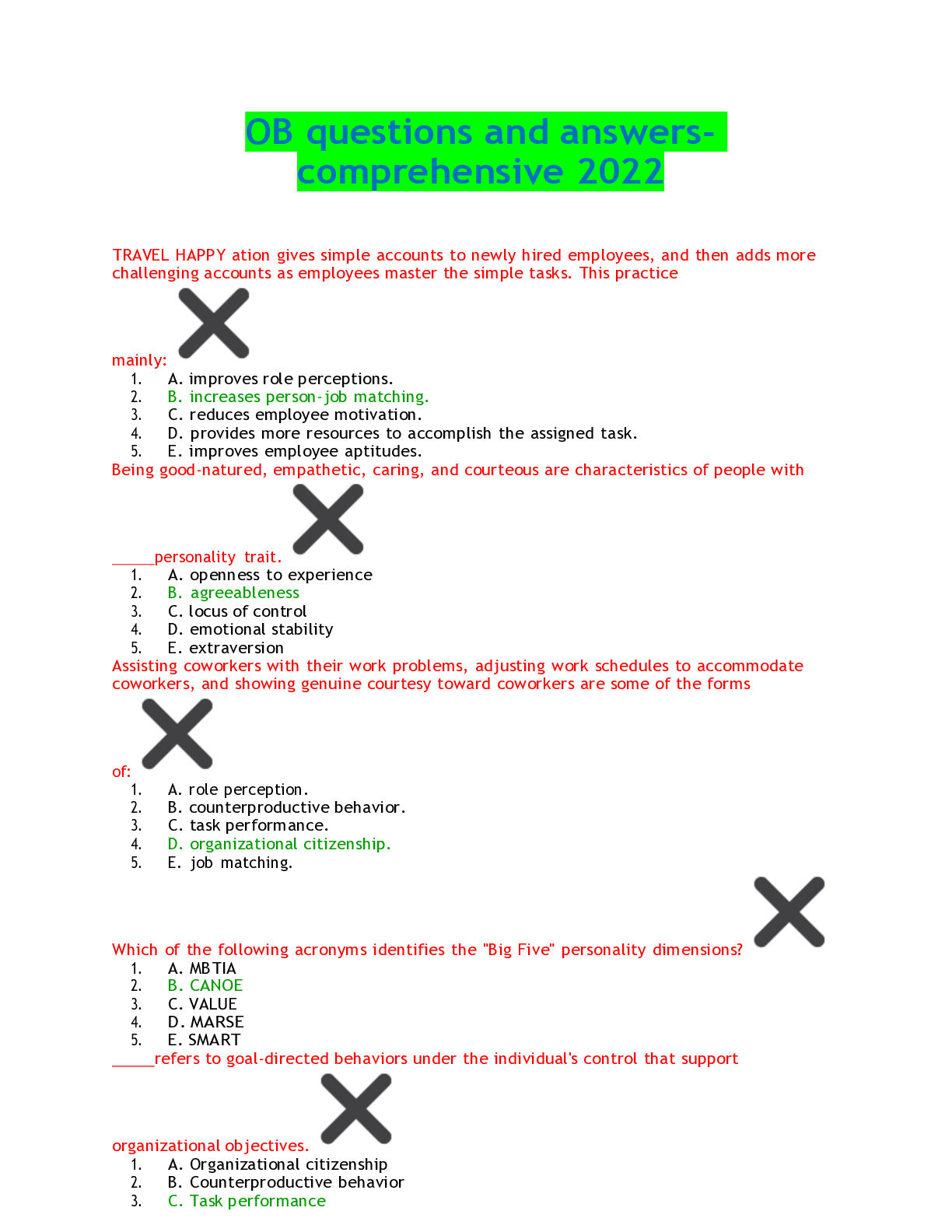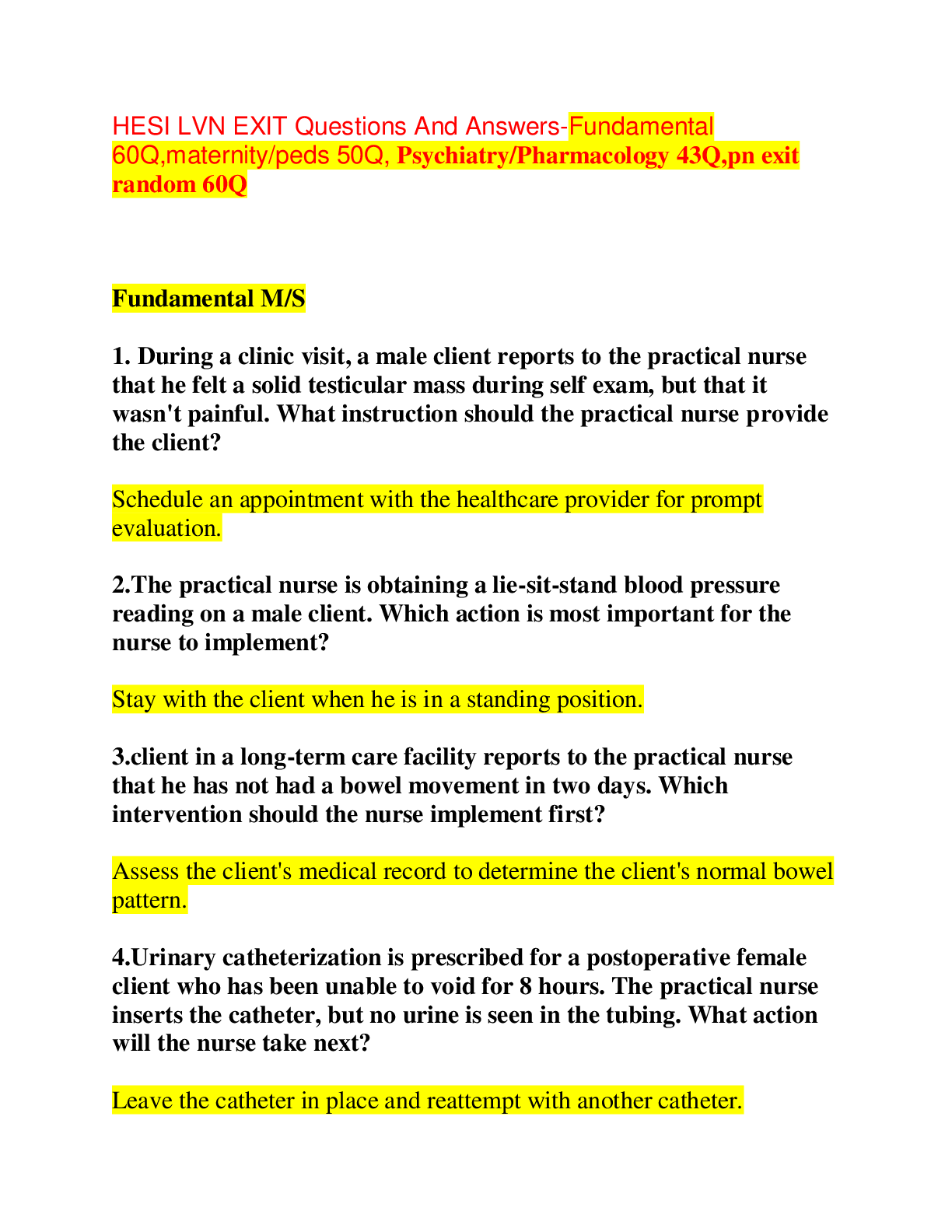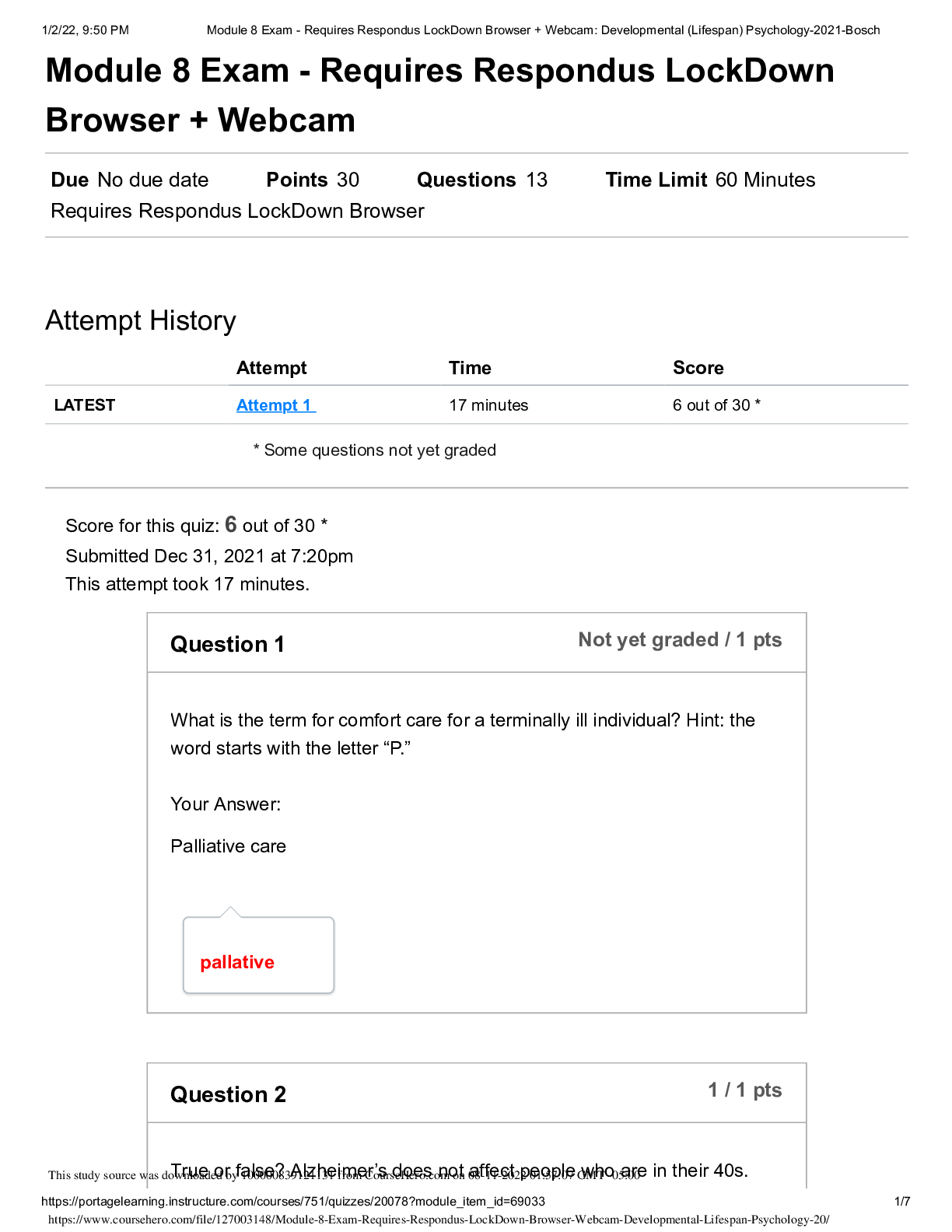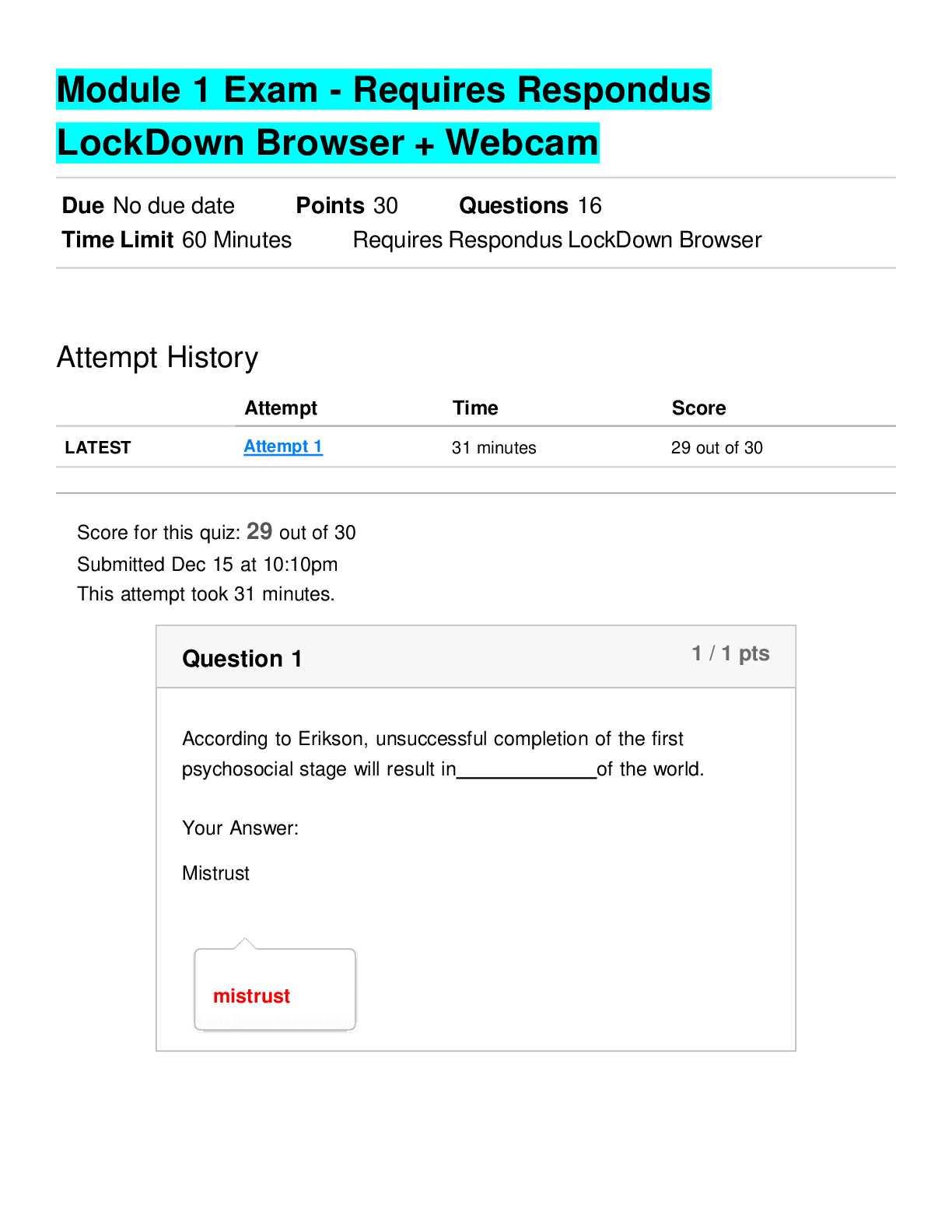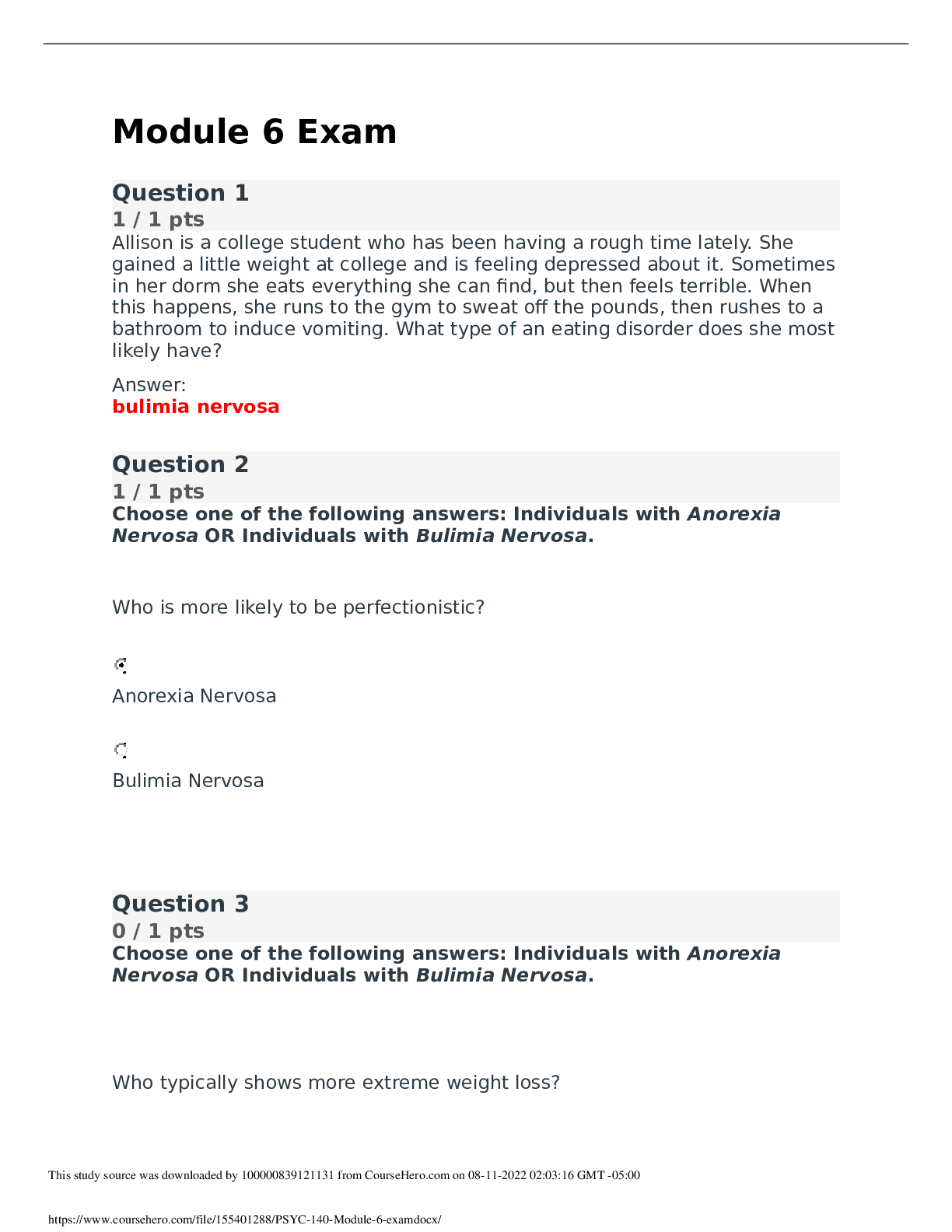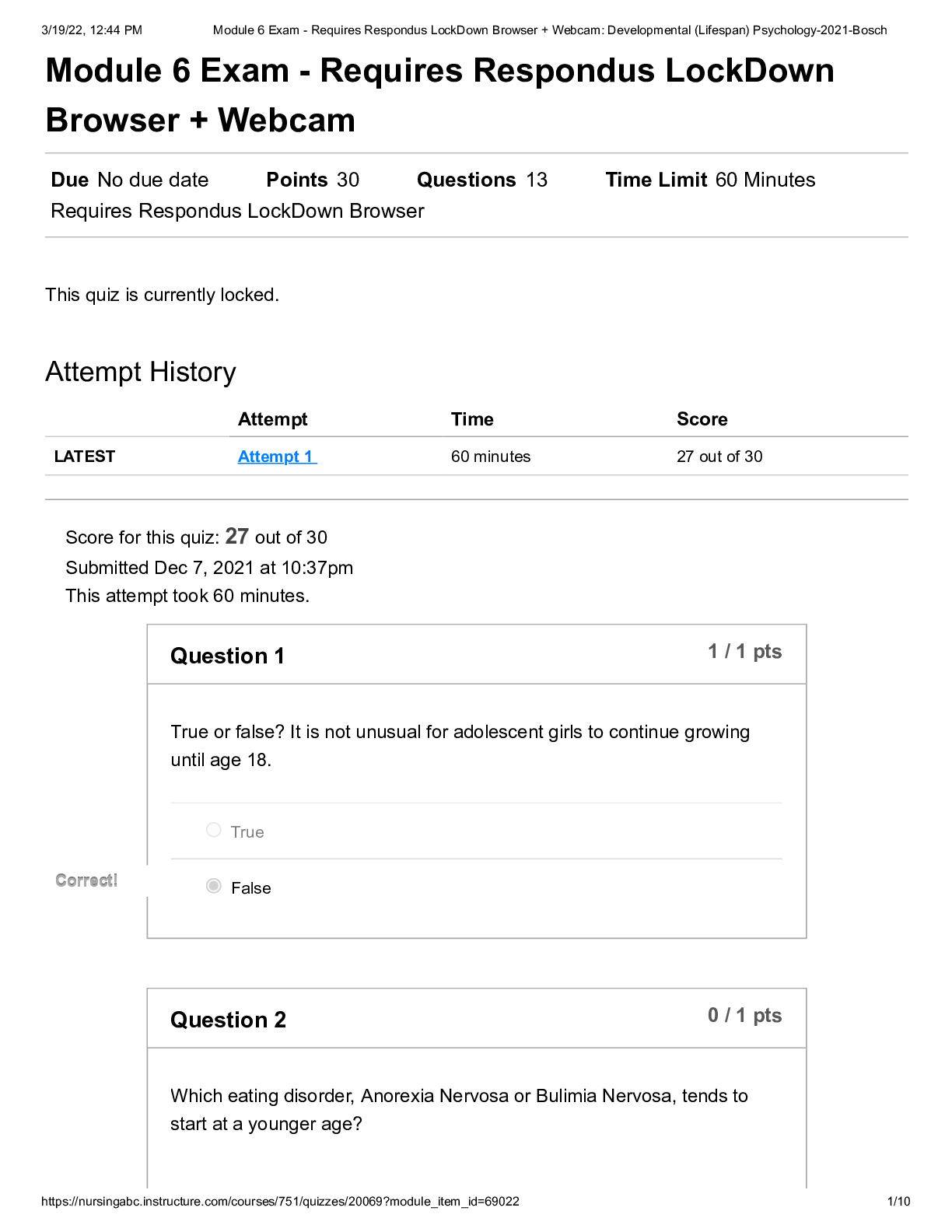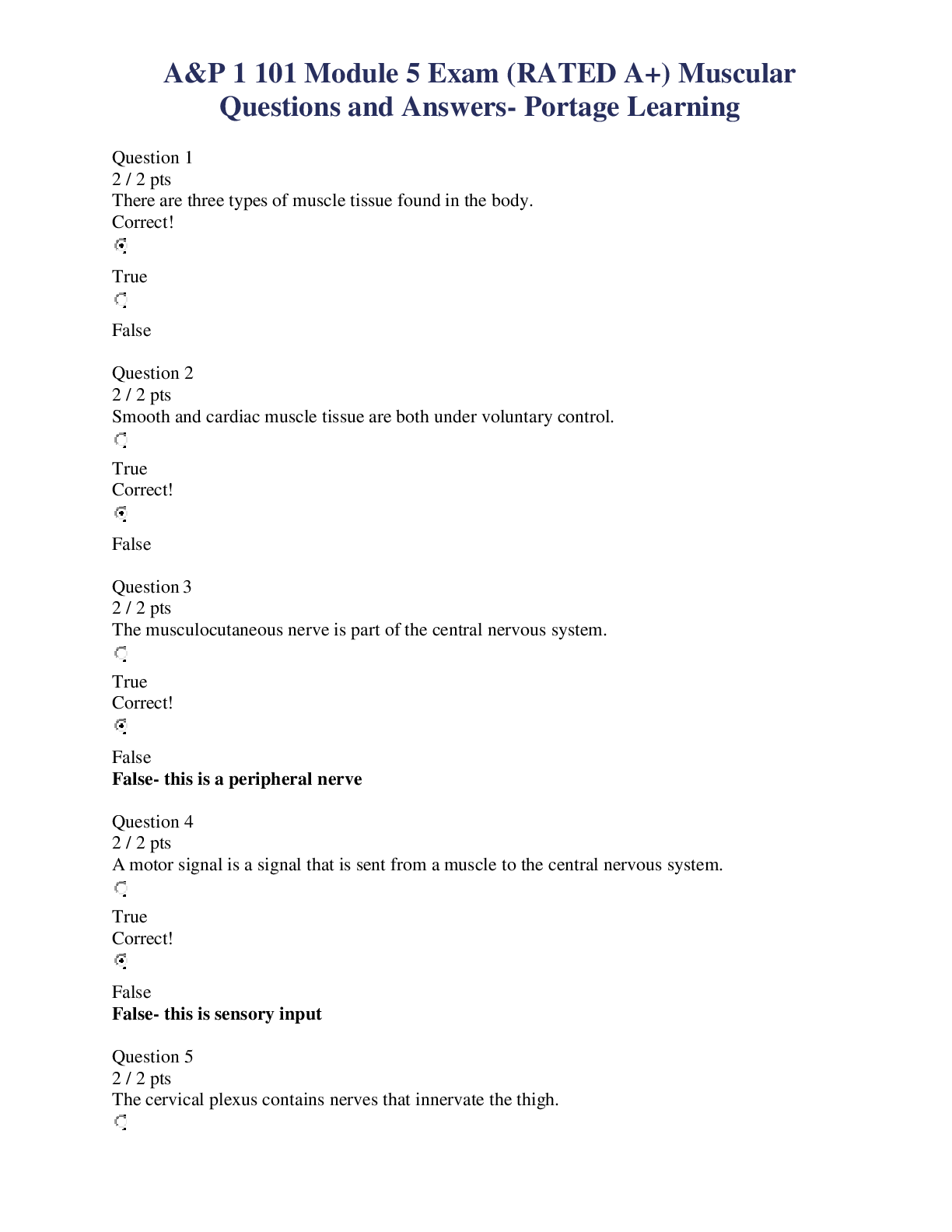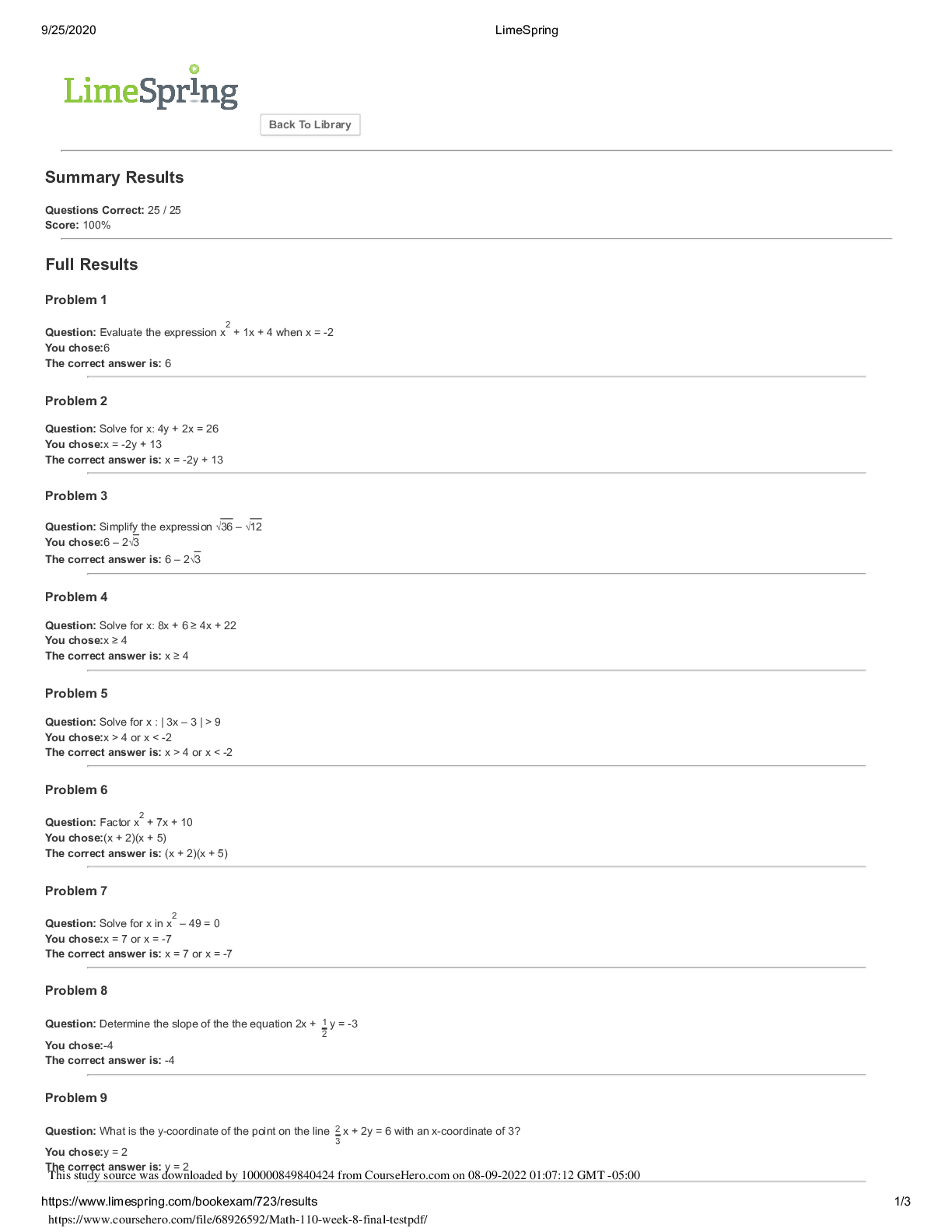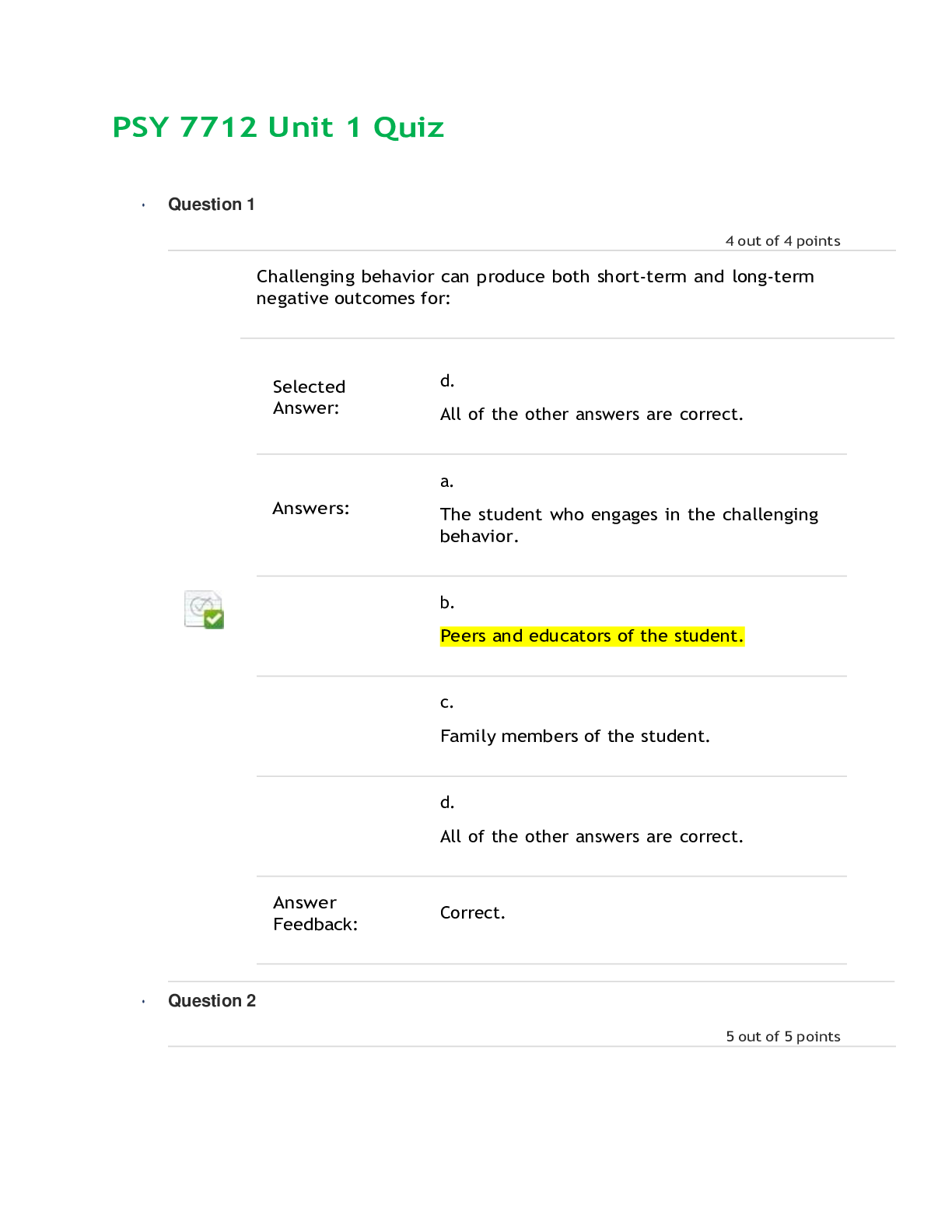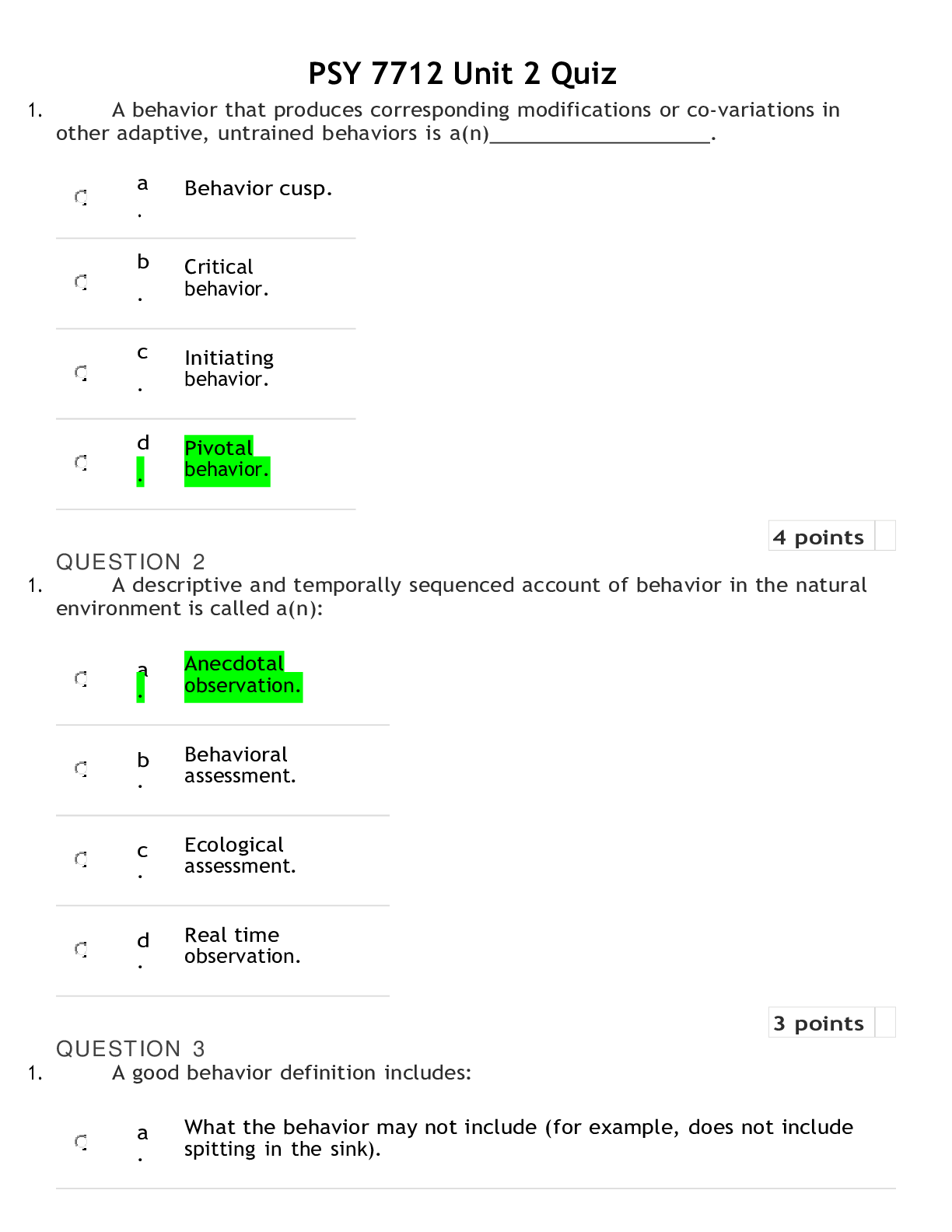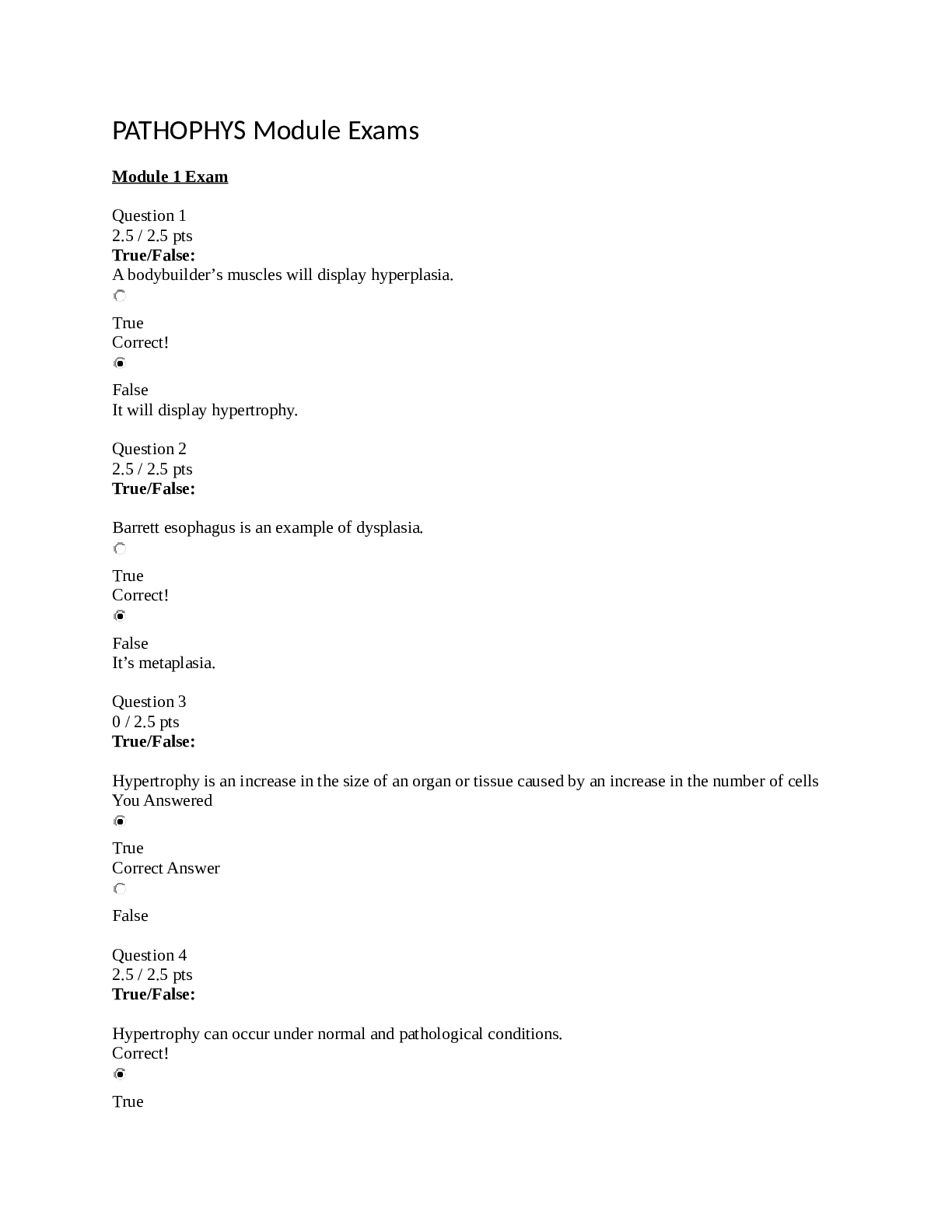A&P 1 101 Module 2 Exam (GRADED A+) Questions and Answers- Portage Learning
Document Content and Description Below
A&P 1 101 Module 2 Exam (GRADED A+) Questions and Answers How many lobes does the right human lung have? Your Answer: Three lobes. Three Lobes Air and food pass in which one of the followin... g areas: Trachea Nasopharynx Oropharynx Alveoli Rings of cartilage line much of the respiratory tract. In which of one the following would cartilage NOT be found? Trachea Larynx Bronchi Alveoli Label the following five items from the diagram: Label B- Label D- Label E- Label F- Label G- Your Answer: Label B- Oral Cavity Label D - Epiglottis Label E- Glottis Label F- Trachea Label G- Esophagus Label B- Oral Cavity Label D- Epiglottis Label E- Glottis Label F- Trachea Label G- Esophagus Note: Essay answers must clearly be in your own words. Explain what happens to the epiglottis during swallowing. Why? Your Answer: When we swallow the epiglottis moves to block the entrance of food particles into our larynx and lungs. The muscles of the larynx pull upward to assist with this movement. They tightly close during swallowing. This prevents food from entering our lungs. The trachea is closed by the epiglottis. The epiglottis moves inferiorly, covering the trachea. This is to prevent food or liquid from entering the lungs. Note: Essay answers must clearly be in your own words. Explain at least two differences between Type I and Type II alveolar cells. Your Answer: The type I cells is a complex branched cell with multiple cytoplasmic plates that are greatly attenuated and realatively devoid of organelles. Type I cells the very thin simple squamous epithelium of the alveoli junction with capillaries. Make up roughly 95 % of aleveolar epithelial cells. The Type II cells act as the 'caretaker' of the alveolar compartment. Type II produce and secrete pulmonary surfactant which is needed throughout the alveolar surface to keep the alveoli open. In addion, Type II cells can divide to replace damaged Type I cells. Make up roughly 5% of alveolar epithelial cells. a. Type I form the very thin simple squamous epithelium of the alveoli in junction with capillaries. Make up roughly 95% of alveolar epithelial cells. b. Type II produce and secrete pulmonary surfactant which is needed throughout the alveolar surface to keep the alveoli open. In addition, Type II cells can divide to replace damaged Type I cells. Make up roughly 5% of alveolar epithelial cells. True/False: Positive pressure is used to move air into the lungs. True False (Negative pressure) True/False: During inhalation the diaphragm contracts to pull the lungs open. True False True/False: During inhalation the rib cage lifts in an upward motion to open and expand the lungs. False True/False: As the thoracic cavity expands and lung volume increases, the density of the gases filling the lungs decreases. True False True/False: When the diaphragm rises, thoracic pressure increases and air naturally flows out of the lungs. True (air naturally flows out of the lungs because of the pressure difference) False Boyle's law states that gas volume is: A. Directly proportional to temperature C. Directly proportional to pressure D. Inversely proportional to pressure E. Both A and B Which one of the following tracheal cartilages are paired? Thyroid Cricoid Arytenoid Epiglottal Hyaline Which one of the following is not true of the pleurae? Parietal pleurae cover the surfaces surrounding the lungs Visceral pleurae cover the diaphragm A healthy pleural cavity is nearly empty of air or fluid Which one of the following is not true of the respiratory physiology? Tidal volume is the maximum amount of air able to be inhaled beyond normal inhalation Tidal volume is the amount of air inhaled and exhaled in one cycle of quiet breathing Inspiratory reserve volume is the maximum amount of air able to be inhaled beyond normal inhalation Expiratory reserve volume is the maximum amount of air able to be exhaled beyond normal exhalation Which one of the following is true of the respiratory physiology calculations? (You may find it helpful to draw the respiratory physiology diagram on a piece of scratch paper.) Total Lung Capacity (TLC) = VC +RV Inspiratory Capacity (IC) = TV+RV Functional Residual Capacity (FRC) = IRV + TV True/False: The gas-exchange region in the lungs must be dry, thin and large. True False requires moisture True/False: The vestibule is the most external portion of the nasal cavity. True True/False: The vestibule is lined with typical respiratory epithelium. True False stratified squamous epithelium is found in the vestibule True/False: Because of diffusion, oxygen naturally moves out of the blood and into the lungs. True Correct Answer False True/False: The bronchioles are surrounded by capillaries for gas exchange. False Matching: • The pleural space fills with air, pus or blood. A. Emphysema • This condition results from fluid-filled alveoli. B. Cystic Fibrosis • This condition results in a loss of alveoli. C. Pulmonary edema • This hereditary illness results in excess mucus. D. Pleurisy The pleural space fills with air, pus or blood. This condition results from fluid-filled alveoli. This condition results in a loss of alveoli. This hereditary illness results in excess mucus. The pressure of three gases equals 1 atmosphere. What is the partial pressure of oxygen (in mmHG) if nitrogen is 300 mmHg and carbon dioxide is 350 mmHg? To receive full credit you must show your work. 1 atm = 760 mmHg 300 mmHg+350 mmHg + X = 760 mmHg X = 110 mmHg 110 mmHG 1atm= 760 mmHg 300 mmHg + 350 mmHG + X = 760 mmHg OR: 760 - 300-350= 110 mmHG Why would warming air be beneficial to gas exchange? Your Answer: The higher temperature the greater gas volume, or the lower temperature the lower gas volume. That's mean is Charles's Law. According to Charles's Law, the volume of a given quantity of gas is directly proportional to its temperature. Therefore the weather when be warm, gas volume greater. Warm air helps keep our lungs expanded in alveoli full and open and gas exchange can take place. It would expand the air to make it more available for gas exchange. Explain why incomplete ventilation is important for effective gas exchange. Your Answer: It helps to conserve water and to maintain a constant temperature within the lungs. Because of incomplete ventilation the air entering mixes with used air remaining in the lungs. Thus, temperature allows for greater gas exchange. Incomplete ventilation helps to maintain a constant temperature within the lungs. The increased temperature allows for greater gas exchange. From widest to narrowest, the branches of the bronchial tree are: Secondary bronchi, tertiary bronchi, primary bronchi, bronchioles Tertiary bronchi, secondary bronchi, primary bronchi, bronchioles Primary bronchi, secondary bronchi, tertiary bronchi, bronchioles In gas exchange (external respiration): Carbon dioxide diffuses from alveoli into capillaries, oxygen diffuses from capillaries into alveoli Oxygen and carbon dioxide is carried from alveoli into the bronchioles Oxygen diffuses from alveoli into capillaries, carbon dioxide diffuses from capillaries into alveoli Oxygen is chemically transformed into carbon dioxide within the alveoli The purpose of these cells are the primary immune defense of the alveoli: Type I alveolar cells Type II alveolar cells Alveolar macrophages Answer the following essay question (10 points): 1. Emphysema is a disease which causes air to become trapped in the lungs upon exhalation. If a patient is diagnosed with emphysema: 1) Which of the following pulmonary function values would be abnormally high? 2) Explain your answer. A. Inspiratory Reserve Volume B. Expiratory Reserve Volume C. Residual Volume Your Answer: C. Residual Volume Residual Volume (RV) is the amount of air remaning in the lungs after exhalation which is that cannot be exhaled. C. Residual Volume as it is the amount of air remaining in the lungs after exhalation that cannot be exhaled Quiz Score: 98 out of 100 [Show More]
Last updated: 1 year ago
Preview 1 out of 13 pages
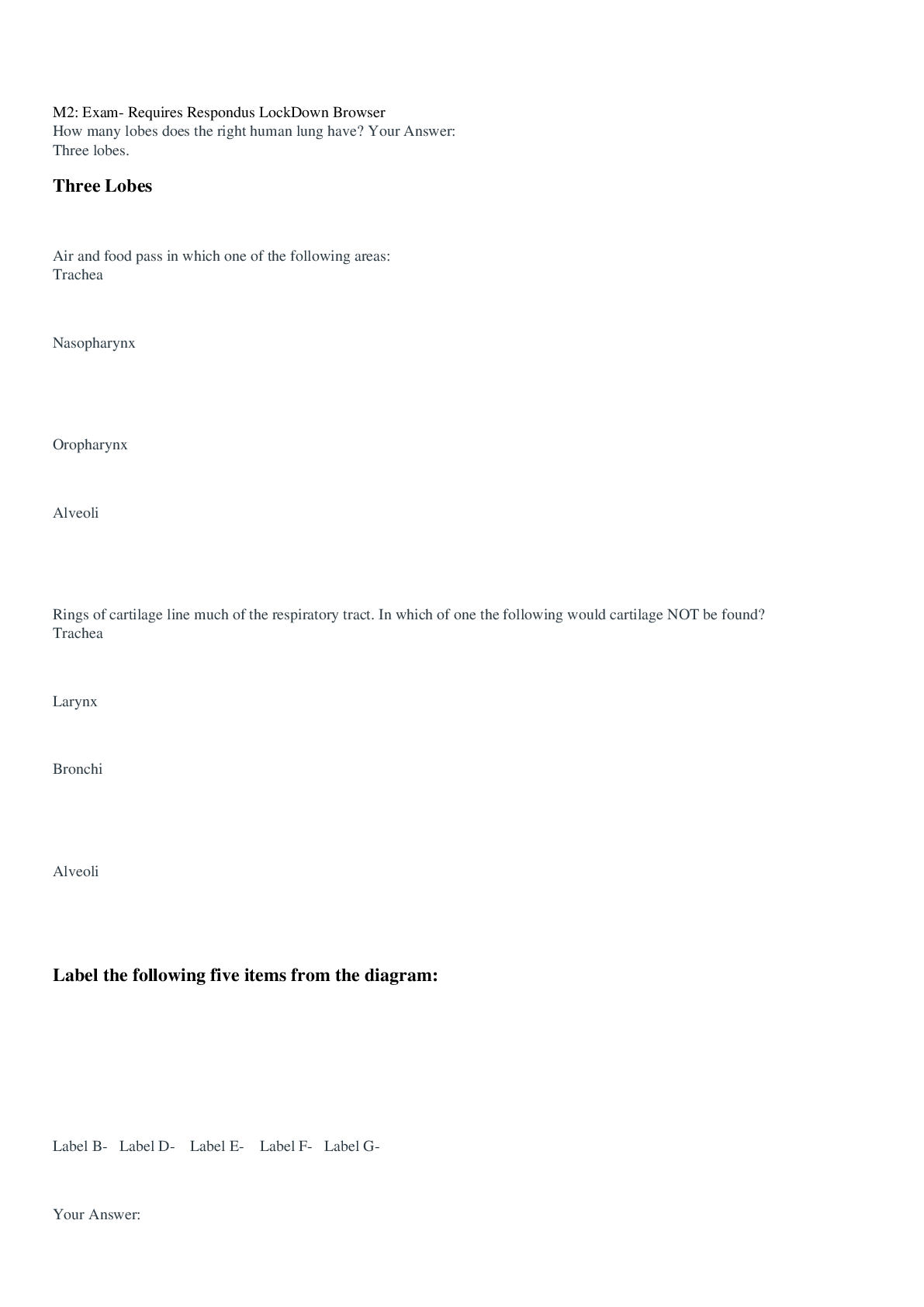
Also available in bundle (1)
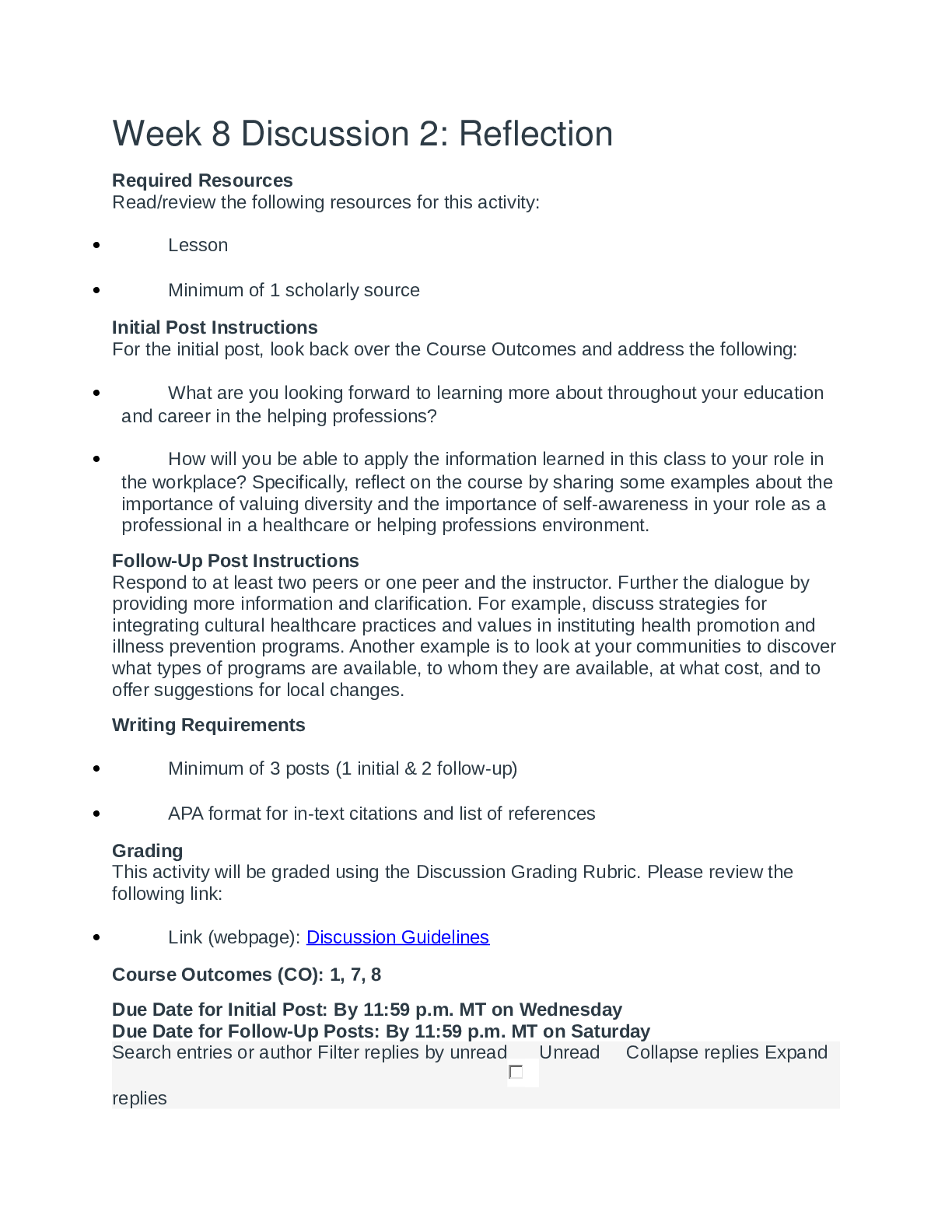
A&P 1 101 Module 1-8 Exam BUNDLE (GRADED A+) Comprehensive set Portage Learning 2021
A&P 1 101 Module 1-8 Exam BUNDLE (GRADED A+) Comprehensive set Portage Learning 2021
By A+ Solutions 2 years ago
$13.5
23
Reviews( 0 )
Document information
Connected school, study & course
About the document
Uploaded On
Aug 19, 2021
Number of pages
13
Written in
Additional information
This document has been written for:
Uploaded
Aug 19, 2021
Downloads
0
Views
63

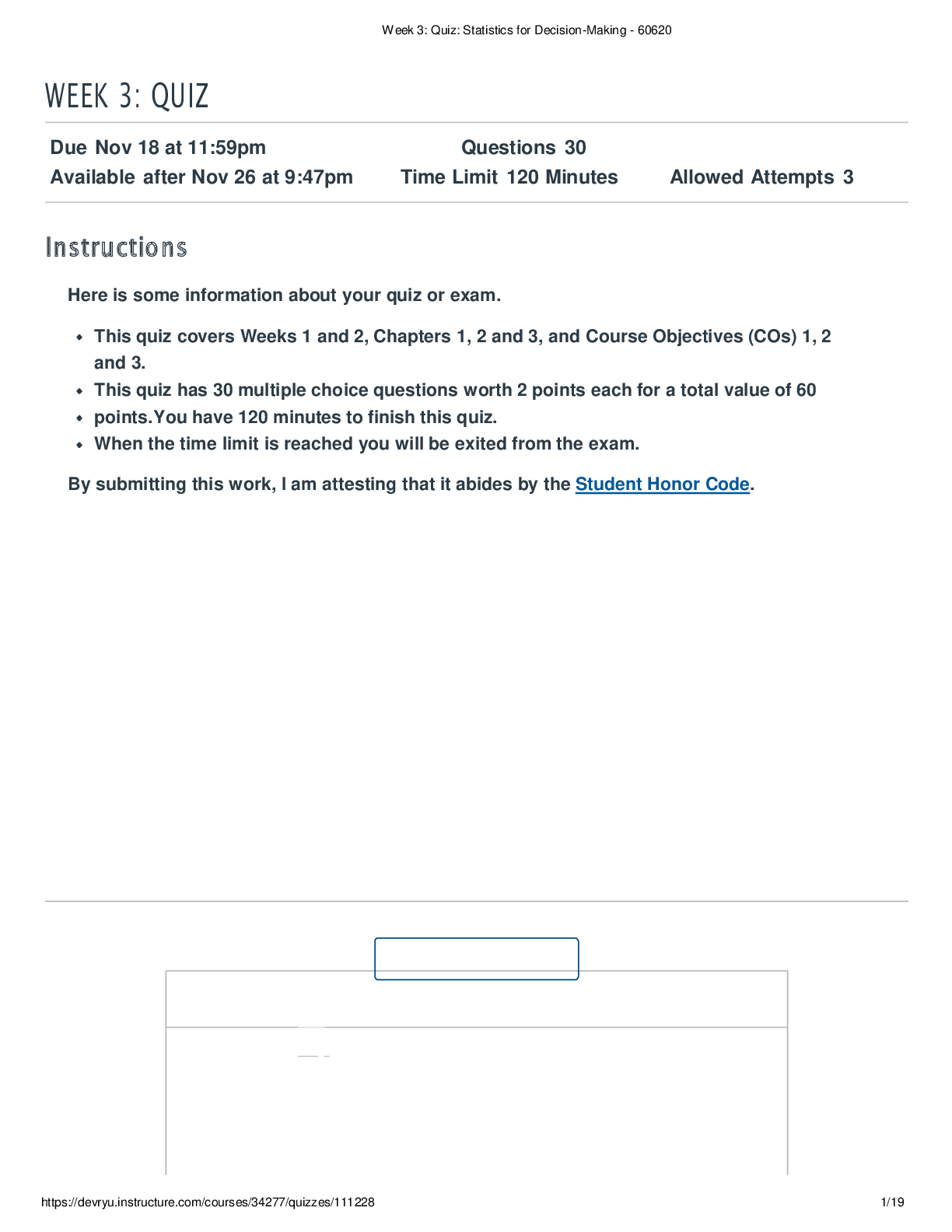

.png)










